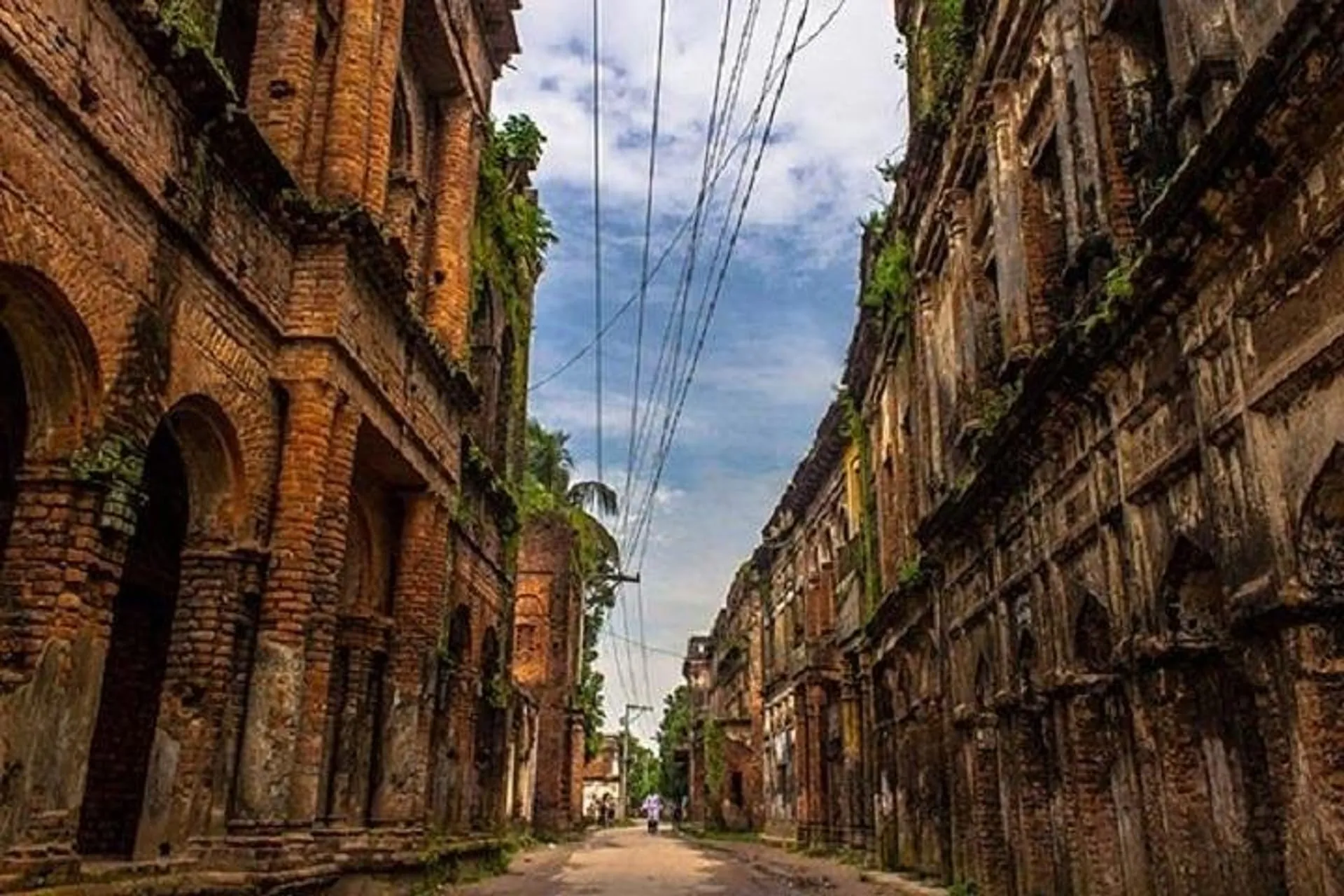Panam Nagar: A Journey Through Bengal’s Past
Panam Nagar, famously known as “The Lost City,” is a mesmerizing relic that brings the grandeur of Bengal’s past to life. Situated near Sonargaon, which once held the prestigious title of Bengal’s capital, this ancient city stands as a powerful reminder of the region’s rich history, culture, and architectural brilliance.
Historical Background
 The city of Panam Nagar was founded as a portion of Sonargaon in the fifteenth century by Isa Khan, a well-known Baro Bhuiyan leader. Panam Nagar was a bustling commercial centre at the height of its heyday, especially known for its manufacture and export of Bengal Muslin, an exquisite and expensive fabric that was sought after all over the world. Because of its significance in the political and economic climate of the day, the city was carefully designed and constructed to house affluent merchants and royal officials.
The city of Panam Nagar was founded as a portion of Sonargaon in the fifteenth century by Isa Khan, a well-known Baro Bhuiyan leader. Panam Nagar was a bustling commercial centre at the height of its heyday, especially known for its manufacture and export of Bengal Muslin, an exquisite and expensive fabric that was sought after all over the world. Because of its significance in the political and economic climate of the day, the city was carefully designed and constructed to house affluent merchants and royal officials.
Why visit?
 A remarkable window into Panam Nagar’s past grandeur is provided by the 52 structures that remain standing along its main thoroughfare. The structures are one to two stories high and represent a masterful combination of Mughal, Greek, and colonial architectural styles. The buildings’ distinctive character that has withstood the test of time is embodied in the elaborate terracotta features, elaborate iron brackets, and vibrant mosaic flooring, all of which are masterworks created by the local artisans.
A remarkable window into Panam Nagar’s past grandeur is provided by the 52 structures that remain standing along its main thoroughfare. The structures are one to two stories high and represent a masterful combination of Mughal, Greek, and colonial architectural styles. The buildings’ distinctive character that has withstood the test of time is embodied in the elaborate terracotta features, elaborate iron brackets, and vibrant mosaic flooring, all of which are masterworks created by the local artisans.
It seems as though you are travelling back in time when you stroll through Panam Nagar. There is a sense of mystery and nostalgia about the city, which is now peaceful and mostly deserted. The stories of a city once teeming with commerce and politics are revealed by the ruins. Because of their distinctive architectural elements, each building enables visitors to picture the lives of persons who once resided and worked there.
In addition to the residential buildings, Panam Nagar is home to a variety of historical and religious sites that highlight its cultural significance. The city houses mosques, temples, a church, an abbey, and even remnants of royal courts and tunnels. Among the most notable landmarks are the 400-year-old abbey-house, the Neelkuthi built by the East India Company, and several important shrines, including those of Fateh Shah and the twelve awliyas (saints).
How to Get There
Panam City is located in Sonargaon, near the Mograpara Point in Narayanganj District, approximately 2.5 kilometers north of the Dhaka-Chittagong Highway. You have several bus options from Gulistan like Swadesh, Borak, Doyel, or Sonargaon to reach the Sonargaon Mograpara intersection on the Dhaka-Chittagong Highway. Once you arrive at Mograpara, the Folk Art Museum is just 2 kilometers away, and you can easily get there by rickshaw or CNG auto-rickshaw. If you prefer to drive, there’s convenient parking available near the museum. Panam Nagar is just a short distance from the museum, making it easy to explore both attractions on the same trip.
Accommodation and Overnight Stay
Due to its proximity to Dhaka, you can visit and return in a single day. There are no overnight accommodations available here. If you wish to stay overnight, you will need to find accommodation in Sonargaon Upazila or Narayanganj city, which are a bit farther away.
Schedule: Panam City Is closed on Sundays every week and also closed on Monday mornings. Additionally, on public holidays, only the museum remains closed but Panam City remains open.
Warning: The buildings are quite old and therefore risky. Do not climb any of the buildings against the instructions.

